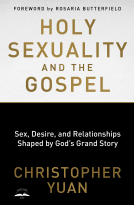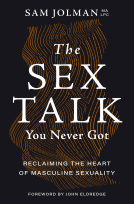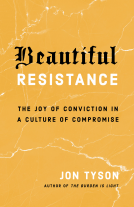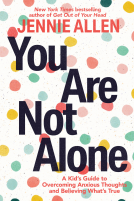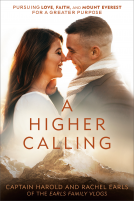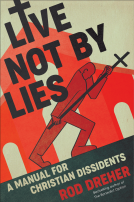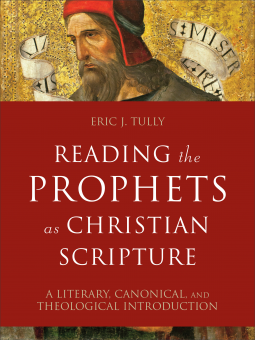
Reading the Prophets as Christian Scripture
A Literary, Canonical, and Theological Introduction
by Eric J. Tully
This title was previously available on NetGalley and is now archived.
Send NetGalley books directly to your Kindle or Kindle app
1
To read on a Kindle or Kindle app, please add kindle@netgalley.com as an approved email address to receive files in your Amazon account. Click here for step-by-step instructions.
2
Also find your Kindle email address within your Amazon account, and enter it here.
Pub Date Mar 29 2022 | Archive Date Apr 12 2022
Baker Academic & Brazos Press | Baker Academic
Talking about this book? Use #ReadingtheProphetsasChristianScripture #NetGalley. More hashtag tips!
Description
This survey textbook is grounded in the view that the prophetic books of the Old Testament should be read as Christian Scripture. Although it covers critical issues such as authorship, background, and history, its primary focus is on the message and theology of the prophetic books and the contribution they make to the Christian canon. Particular attention is given to literary issues, such as the structure of each prophetic book. Full-color illustrations, diagrams, and artwork bring the text to life. Additional resources for instructors and students are available through Textbook eSources.
Available Editions
| EDITION | Other Format |
| ISBN | 9780801099731 |
| PRICE | $49.99 (USD) |
| PAGES | 432 |
Average rating from 4 members
Featured Reviews
 Conrade Y, Reviewer
Conrade Y, Reviewer
When we think of the prophets, we often think about the Old Testament and the constant refrain of powerful warnings and prophecies. Few people would think about the New Testament or the letters from the disciples of Jesus. While the Church in general professes both the Old and New Testament as the Word of God, there is a tendency for many to discard Old Testament Scriptures as ancient or irrelevant. Many scholars and theologians have tried to present the two testaments as wholly revealed Word of God authoritative and relevant for the Church today, albeit with varying levels of success. While the ancient texts apply directly to a time no longer existent, there are many principles and prophecies that are still relevant today. Author Eric Tully aims to help us "read" the ancient OT prophets as "Christian Scripture" and to equip our reading with contemporary application in mind. How do modern readers appreciate and understand the Old Testament prophets? How does God speak to us today from the prophets of old? How could the prophets speaking in an ancient context still be relevant for us today? Author-Professor Eric Tully is fully aware of the negative views of the Old Testament prophetical books. He even spells out some of the common perceptions among many readers who find the prophetical books too challenging for comfort. As a result, some believers do not even read the prophets at all, save for occasional references from books, talks, and sermons. Believing that if people understand the contexts better, they would then be able to read the prophets in a more positive light. Chapter 2 and 3 (Part One) address the theological and historical contexts respectively. With covenant as a key theological theme, Tully shows us the tight connection from the covenants of old to the New Covenant in Christ. Historically, he guides us through the various periods of Israelite existence and their geographical locations, pointing out major events we ought to know. Chapters 4 to 8 (Part Two) look at the role of the OT prophets, false prophets, their message, their strategies, and the way the prophetic books were canonized into our modern Bible. Finally, Part Three introduces us to every major and minor prophet in the Old Testament. Tully gives us the following framework:
- Orientation of the prophet
- Their timeline
- Prophetical Phase and Exploration
- Brief summaries of the book
- Key message(s)
- Implementation of the lessons learned
- "Christian Reading Questions"
My Thoughts
==============
This is a well-thought-out introductory reference book for Christians in general. Written to rekindle interest and excitement to study the prophets, it is hoped that believers will be able to read the prophets with fresh eyes of enthusiasm. Without such rekindling, it is unlikely to change the common misconception that the prophets are ancient, irrelevant, and literally too difficult to understand. This book offers a correction to any such attitude. Tully does several things well. First, he begins with an understanding of the reluctant reader of the Old Testament prophets. That approach would hook readers to give themselves another chance to actually read the prophets. By explaining the contexts right from the start, he offers the readers much-needed tools to use while going through ancient literature. By explaining the roles of the prophets, readers can reset their expectations not from a modernistic standpoint but from a theological point of view. This should enable readers to understand the contexts and to be sensitive to any timeless principles that might arise.
The second thing that makes this book worth reading is the introductory chapters to every prophetical book in the Bible. Readers will find the presentation of the material not only readable but engaging as well. He begins each book with a modern example, thought, or illustration to pique the interest of readers. He dissects the material not just with words but with many tools that we have grown familiar with. Tools such as tables, maps, visual pictures, bullet point structures, and colourful illustrations. He ends every chapter with questions to help us revisit or reflect on key themes and pointers.
Finally, this book should appeal to those of us who are already reading or studying the prophets. By giving us a new angle to look at the prophets, scholars, theologians, and teachers should add this book to their repertoire of teachings about the prophetical books to move believers from reluctant readers to eager students of the prophetical books.
I appreciate books that inspire and encourage people to read more of the Bible, especially the less popular books of the Bible.
Eric J. Tully (PhD, University of Wisconsin-Madison) is associate professor of Old Testament and Semitic languages and director of the PhD (Theological Studies) program at Trinity Evangelical Divinity School in Deerfield, Illinois. He is the author of The Translation and Translator of the Peshitta of Hosea and coauthor of Old Testament Textual Criticism.
Rating: 4.5 stars of 5.
conrade
This book has been provided courtesy of Baker Academic and NetGalley without requiring a positive review. All opinions offered above are mine unless otherwise stated or implied.
“Reading the Prophets as Christian Scripture,” by Eric J. Tully invites the non-scholar to consider the relationship of the Prophets to the Christian faith. “The prophetic books of the Old Testament are Christian Scripture.” These books were the writings of the first Christians from which they preached about Jesus. Tully’s work will profit anyone interested in understanding how the message of the Old Testament prophets pointed to the gospel.
The book begins by introducing the general idea of prophecy: “how it works, how the prophets communicate, and so on.” Sometimes the prophets spoke in ways that seem confusing. This includes speaking of the future as though it already occurred or in terms of the past, as when David sits on the future throne or peoples lost to time enter the last days’ kingdom. These types of discussions help with understanding the biblical text.
Tully explains how the Old Testament prophets were concerned foremost with the people’s covenant with God. Humans cannot live up to their responsibilities to him, and nothing they do can fix this. We need God to fix us. The last section of the book surveys the prophets, offering historical background and highlighting the recurring themes of covenant breaking and the promise of God’s deliverance that will ultimately come through Jesus.
Tully clarifies language that seems harsh to modern readers. I understand why he does this, but it was distracting. I disagree with the author’s treatment of Isaiah 7.14. He needlessly diminishes the power of the Immanuel prophecy. The author believes it could reference Isaiah’s son - “The best explanation is adouble fulfillment.” At this point in Isaiah, it is a difficult prophecy. However, when the prophet gives ownership of the land to Immanuel in Isaiah 8.8 and assigns divine names to him in Isaiah 9.6, Isaiah’s intent becomes clearer. Repeated prophecies of God coming through an end times messiah and servant fill the book, the reason he is called “The Messianic Prophet.” Isaiah 7.14 is fulfilling Isaiah 7.11, giving “a sign… deep as Sheol or high as heaven.” It is an astonishing prophecy upon which the rest of the book builds. Using Isaiah’s son for an illustration is an unlikely interpretation given these facts.
The author shows both a passion for his subject and respect for the ancient text. The ancient writers (editors) deserve the benefit of the doubt; beyond their divine inspiration, they lived thousands of years closer to the events described. As the author said, they would know what belonged in the Bible, like a fan knows what belongs in the “Star Wars canon.”
“A prophetic book is not just a record of a prophet’s ministry in chronological order - it is an argument with objectives and goals aimed to persuade the people of God who will read it after the prophet’s lifetime.” And with this thought, Tully establishes his premise - the prophets were written for people who would come later, especially for those in whose time the promised events took place, Christians. Each section ends with a list of “Christian Reading Questions,” making it a great tool for small groups and class settings. It will be a great addition to any library. Buy it and use it.
Readers who liked this book also liked:
Harold Earls, IV; Rachel Earls
Biographies & Memoirs, Parenting, Families, Relationships
